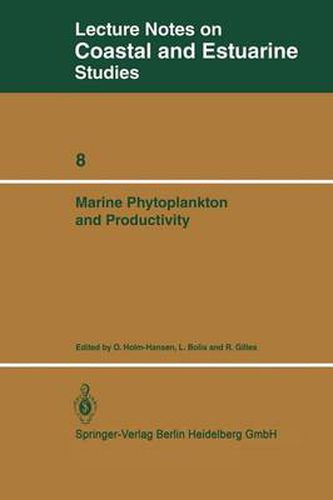Readings Newsletter
Become a Readings Member to make your shopping experience even easier.
Sign in or sign up for free!
You’re not far away from qualifying for FREE standard shipping within Australia
You’ve qualified for FREE standard shipping within Australia
The cart is loading…






When I was asked to organize this symposium on marine producti vity, it made me reflect on what aspects of this subject would be stimulating to a heterogeneous group of laboratory-oriented physiolo gists and biochemists. In recent years there have been several books which discusses the methodology commonly used in primary production studies and described the magnitude of photosynthetic CO reduction 2 in various areas of the world’s oceans. I therefore decided to dis pense with these conventional aspects of primary production and invite researchers to speak on a variety of problems relating the abundance and activity of phytoplankton to environmental conditions. The lectures I invited were thus quite diverse in character, but all were related either to factors affecting the rate of photosynthesis or to the fate of reduced carbon as it passes through the microbial food web. In addition to these talks the participants benefited from a number of shorter presentations and poster sessions which dealt with production and cycling of organic carbon in the marine environment. February 1984 Osmund HOLM-HANSEN CONTENTS 1. Factors Governing Pelagic Production in Polar Oceans E. SAKSHAUG and O. HOLM-HANSEN *. **. ****… … *. ***. . ****. *. **** 1 2. Productivity of Antarctic Waters. A Reappraisal S. Z. EL-SAYED *… ********. . ***. *. *********. ***. *. *… . *… . *. 19 3. A Thermodynamic Description of Phytoplancton Growth D. A. KIEFER… … … … … … … … … … … … … … … … . . 35 4. Mechanisms of Organic Matter Utilization by Marine Bacterio plankton 45 F. AZAM and J. W.
$9.00 standard shipping within Australia
FREE standard shipping within Australia for orders over $100.00
Express & International shipping calculated at checkout
When I was asked to organize this symposium on marine producti vity, it made me reflect on what aspects of this subject would be stimulating to a heterogeneous group of laboratory-oriented physiolo gists and biochemists. In recent years there have been several books which discusses the methodology commonly used in primary production studies and described the magnitude of photosynthetic CO reduction 2 in various areas of the world’s oceans. I therefore decided to dis pense with these conventional aspects of primary production and invite researchers to speak on a variety of problems relating the abundance and activity of phytoplankton to environmental conditions. The lectures I invited were thus quite diverse in character, but all were related either to factors affecting the rate of photosynthesis or to the fate of reduced carbon as it passes through the microbial food web. In addition to these talks the participants benefited from a number of shorter presentations and poster sessions which dealt with production and cycling of organic carbon in the marine environment. February 1984 Osmund HOLM-HANSEN CONTENTS 1. Factors Governing Pelagic Production in Polar Oceans E. SAKSHAUG and O. HOLM-HANSEN *. **. ****… … *. ***. . ****. *. **** 1 2. Productivity of Antarctic Waters. A Reappraisal S. Z. EL-SAYED *… ********. . ***. *. *********. ***. *. *… . *… . *. 19 3. A Thermodynamic Description of Phytoplancton Growth D. A. KIEFER… … … … … … … … … … … … … … … … . . 35 4. Mechanisms of Organic Matter Utilization by Marine Bacterio plankton 45 F. AZAM and J. W.